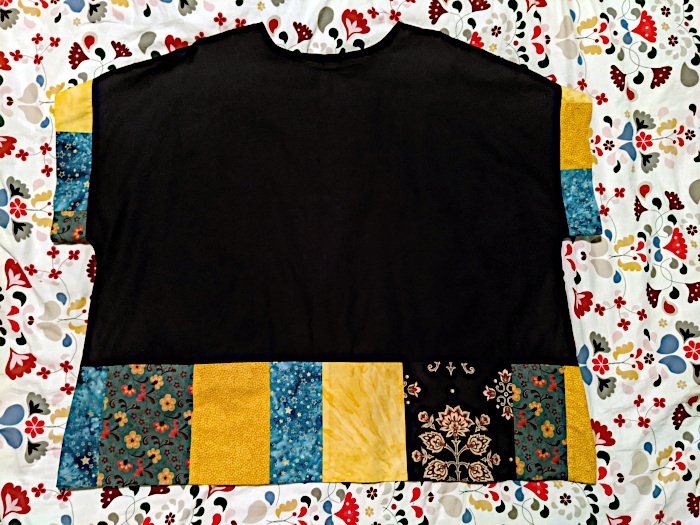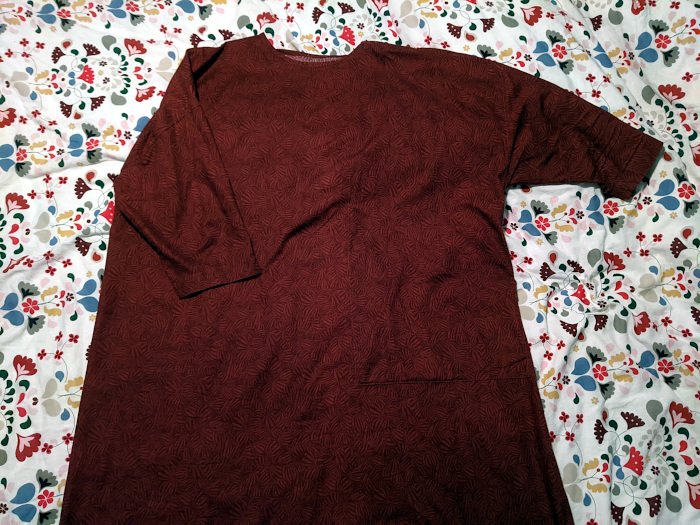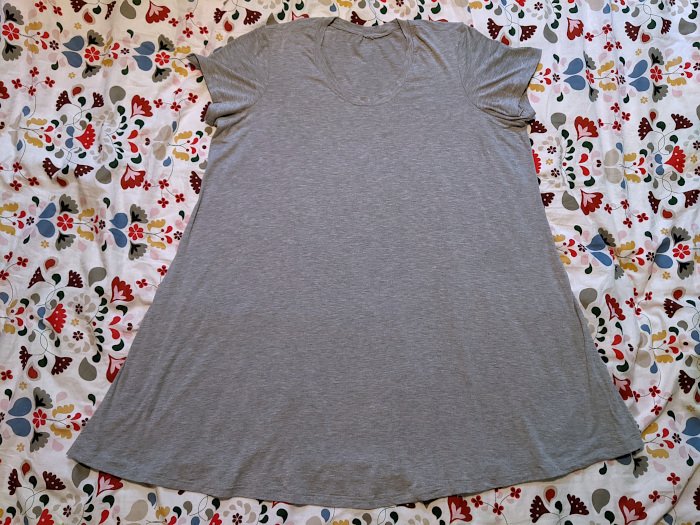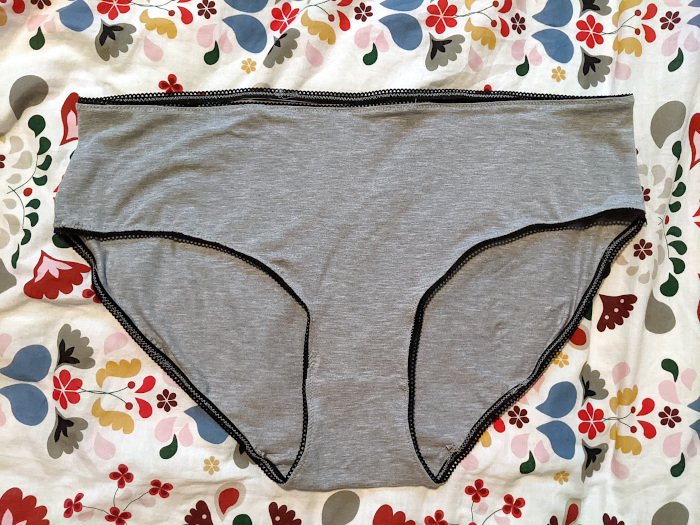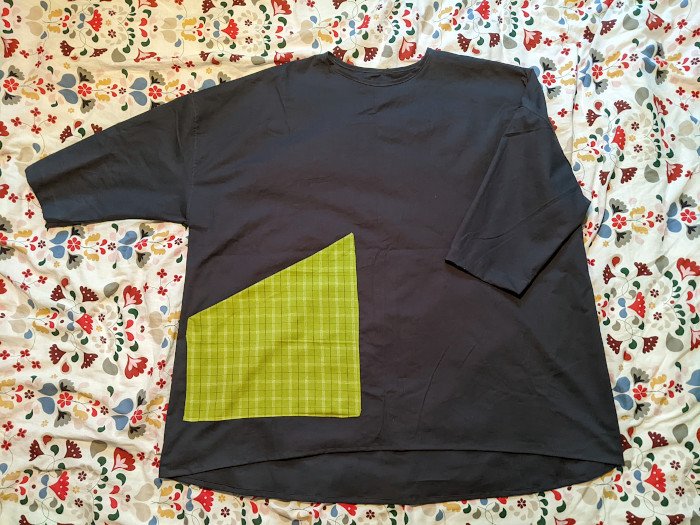I got a copy of Birgitta Helmersson’s book Zero Waste Patterns: 20 Projects to Sew Your Own Wardrobe a few months ago, and have been poring over it ever since. Thanks to the excellent Check Your Thread podcast, I have been shifting to thinking of everything fabric as “resources”, which led me to the idea of sewing a wearable mock-up dress from the instructions in the book.
And I did have several old sheet sets sitting in a storage box… it made sense to educate myself about zero-waste patterns by using some old bedlinens. Since the bedlinen doesn’t match standard fabric widths, it wouldn’t be zero-waste as such, but Helmersson’s methods would help ensure I had nice rectangular off-cuts that would be easy to integrate into another project.
The dress in the above photo is made from one fitted sheet and one pillowcase (because I miscalculated the usable width and length of the sheet), plus some buttons I already had. The only purchase was for matching thread.
Things I liked:
I had an incredible amount of control over the dress details. The bodice is very oversized (on purpose!), and its width is based on a tunic pattern I like. The bodice length, shoulder shaping, and other details are from Helmersson’s boilersuit pattern in her book.
The sleeves are based on a different pattern from the book. I very much liked how the sleeve cuffs are four fabric layers deep (plus a fifth layer of sleeve fabric), so they have structure without requiring interfacing. The same thing was done for the button placket/neck edging. I took an educated guess on the sleeve length, accepting I may wind up with 3/4 sleeves, but instead they fall perfectly to my wrists.
The skirt size was pulled from yet another book pattern, and worked out well for me both in width (a little bit gathered, but not a lot since the silhouette is already oversized) and length. I also managed to make some seam pockets for the skirt, and arranged things so they are placed ergonomically.
Things I didn’t like:
The placket took three tries. In the end I gave up on sewing it on in one go, and did the wrong side first, then topstitched the right side over it. So on the inside, you can see two stitch lines, but on the outside only one. Know your sewing limits.
I sewed the very bottom of the placket shut per the boiler suit instructions, but didn’t take the seam allowance into account, so it doesn’t overlap perfectly above the waist seam. Oh well.
The top button should have been a bit lower, so the buttonhole ends just before the V shaping starts.
Next time I need to gather a skirt, I’m making separate basting lines for the front & back, instead of one big baste around the entire waistline.
Notice that all the things I liked came from the book and the designs, and all the things I didn’t come from my own sewing skills!
The end result does look a lot like the ZW Gathered Dress pattern Helmersson sells separately from the book on her website (which I admit was the general idea), but it’s not the same; the back neck facing and some other shaping are different. As for the zero waste part, I pretty much used up everything I cut. The few leftovers will make good patch pockets, or bag linings, or trim.
I’m looking forward to doing more from the book. I might even, you know, follow one pattern by itself next time. The pattern collection is more than enough to create a capsule, or just regular, wardrobe, without making it look like you’re using the same patterns over and over.
Verdict: am I pleased with the dress? Very! Am I okay with wearing bedsheets out and about? Not sure yet, but I have worn the dress at home a few times and it’s super-comfy, practical, and surprisingly warm (I guess sheets have a denser weave than fashion fabrics?). It’ll be great for colder weather, either by itself or under another layer. I would definitely like to try out more versions of the dress in different fabrics too.




